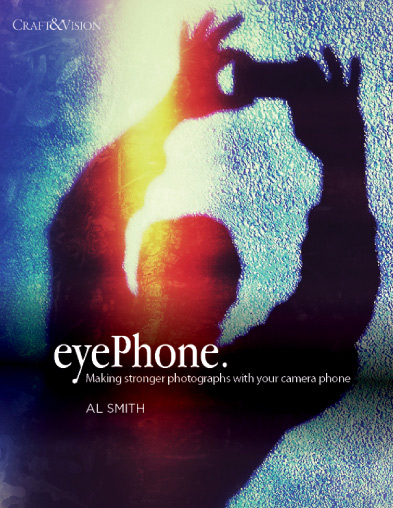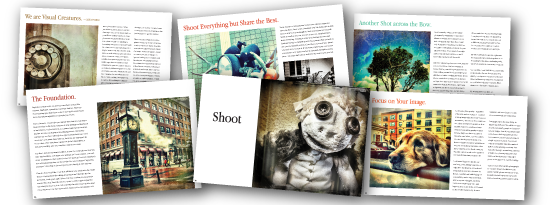Mobile phone photography primer with “EyePhone” by Al Smith
Mobile phone cameras gain more and more popularity these days. Many established photographers use them as their creative notebook, to simplify the artistic process or just record their daily lives to share with others. Mobile phone cameras are as easily accesible to non professional photographers as well. Stuck in back pocket, lightweight, they are always handy when needed. The quality of images, in good light of the day, is totally sufficient for e-mail or sharing on-line, let alone showing on the phone screen.
The mass use of those mobile phone cameras inspired creation of countless apps improving the picture taking experience and offering post-processing with ready filters and in just few clicks, turning the images into art of 21 century. That’s how the new genre of photography was born, named after the most popular mobile phone (with camera) – “iPhone photography” or “iPhoneography”.
It was only a question of time for an e-book on iPhone (and other mobile phone cameras) photography to be written and released by Craft & Vision, among great collection of other photography related topics.
“eyePhone. Making stronger photographs with your camera phone” was written by Al Smith, based on the iPhone photography classes he is teaching. On 45 pages, author is trying to convince us that mobile phones are not only great for every day shooting, but also an exciting artistic tool.
“eyePhone” starts from the history of Al Smith discovering how liberating is photographing with lightweight iPhone compared to dSLR. And how much fun he had photographing his children when the “big” camera stayed behind. In fact, the e-book is illustrated with examples of authors own phone camera work. And many of the chapters in the e-book are not your traditional tutorial style, more like essays coming from authors own experience in mobile phone photography.
The introduction is followed by a very interesting chapter on technical specifications of iPhone. That’s when I learned the aperture of the iPhone lens I mentioned yesterday! I was never curious enough to search for this type of information on my own, but this knowledge helps understanding advantages and limitations of this mobile phone camera.
Next chapters bring tips on different aspects of mobile phone photography- from picture taking, to post-processing and sharing, is it by posting online or printing. This section brings great suggestions for apps, I downloaded few of them and use them since. There are ideas on lighting iPhone shots (with another iPhone, of course!) and steadying the camera for sharp shots (some things I never thought about). There is even a list of printing services if you would like to turn your digital files into hard copies to hand over or hang on the walls.
Overall, “eyePhone” is a great primer for new iPhone owners with a photographic interest. Learning the basics, such as understanding the camera, achieving proper exposure, focus and sharpness, are as important here as for dSLR. I am also sure, if they like Instagram or don’t care for it at all, the veterans of mobile phone camera shooting will find a tip or app suggestion for themselves among limitless resources in this e-book.
The links in this post are affiliate links. See details of our affiliate policy here.

